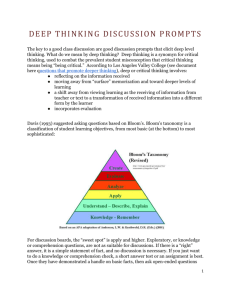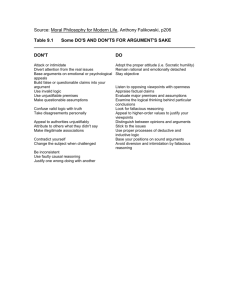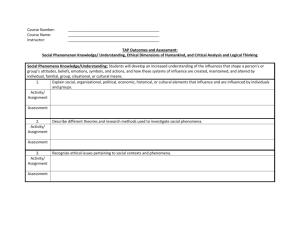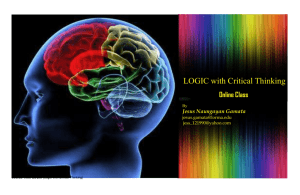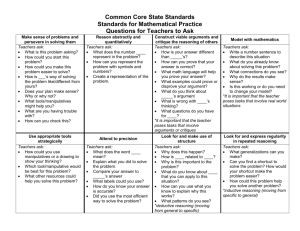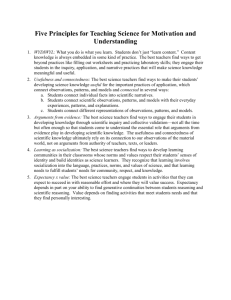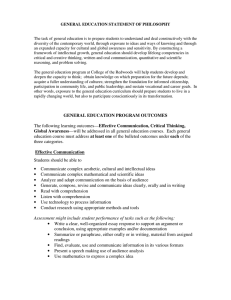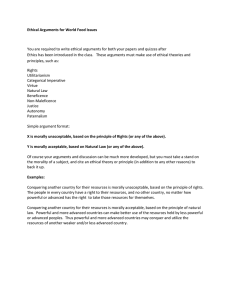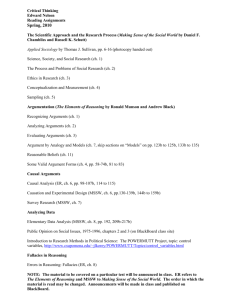Questions to elicit critical thinking - University of Illinois College of
advertisement
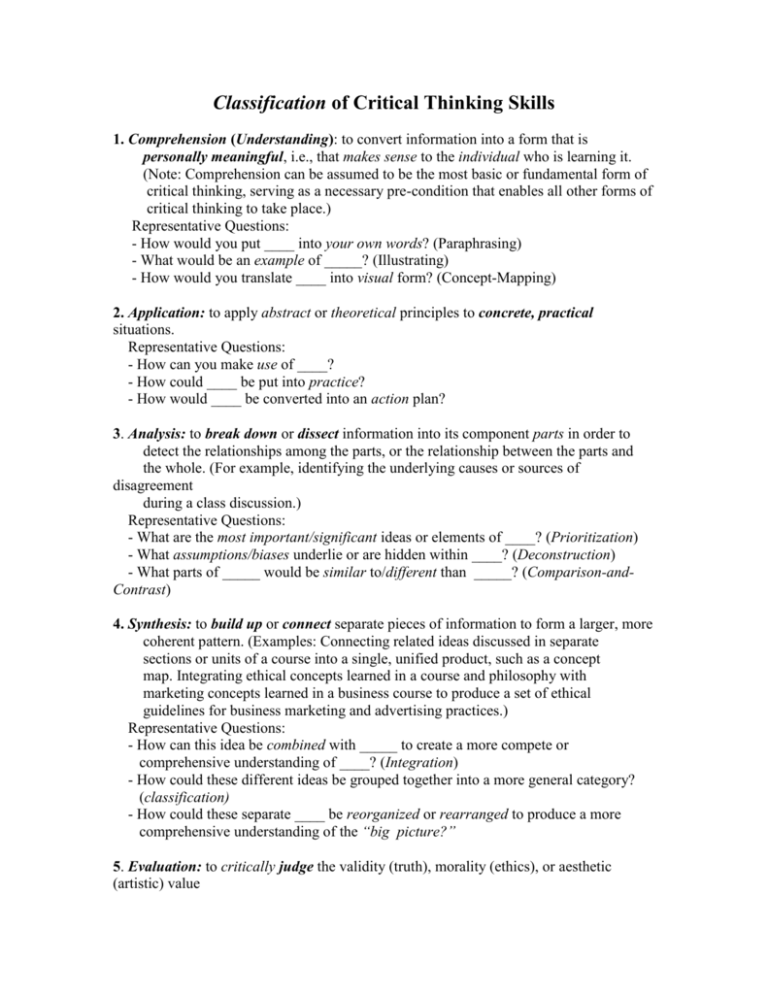
Classification of Critical Thinking Skills 1. Comprehension (Understanding): to convert information into a form that is personally meaningful, i.e., that makes sense to the individual who is learning it. (Note: Comprehension can be assumed to be the most basic or fundamental form of critical thinking, serving as a necessary pre-condition that enables all other forms of critical thinking to take place.) Representative Questions: - How would you put ____ into your own words? (Paraphrasing) - What would be an example of _____? (Illustrating) - How would you translate ____ into visual form? (Concept-Mapping) 2. Application: to apply abstract or theoretical principles to concrete, practical situations. Representative Questions: - How can you make use of ____? - How could ____ be put into practice? - How would ____ be converted into an action plan? 3. Analysis: to break down or dissect information into its component parts in order to detect the relationships among the parts, or the relationship between the parts and the whole. (For example, identifying the underlying causes or sources of disagreement during a class discussion.) Representative Questions: - What are the most important/significant ideas or elements of ____? (Prioritization) - What assumptions/biases underlie or are hidden within ____? (Deconstruction) - What parts of _____ would be similar to/different than _____? (Comparison-andContrast) 4. Synthesis: to build up or connect separate pieces of information to form a larger, more coherent pattern. (Examples: Connecting related ideas discussed in separate sections or units of a course into a single, unified product, such as a concept map. Integrating ethical concepts learned in a course and philosophy with marketing concepts learned in a business course to produce a set of ethical guidelines for business marketing and advertising practices.) Representative Questions: - How can this idea be combined with _____ to create a more compete or comprehensive understanding of ____? (Integration) - How could these different ideas be grouped together into a more general category? (classification) - How could these separate ____ be reorganized or rearranged to produce a more comprehensive understanding of the “big picture?” 5. Evaluation: to critically judge the validity (truth), morality (ethics), or aesthetic (artistic) value of ideas, data, or products by using relevant assessment criteria (standards for judging quality). Representative Questions: - How would you judge the accuracy or validity of _______? - How would you evaluate the ethical (moral) implications or consequences of _____? - How would you rate the aesthetic quality (beauty) of ____? 6. Deduction: to draw conclusions about particular instances that are logically consistent with, or derive from general principles and premises. Representative Questions: - What specific conclusions can be drawn from this general ____? - If this general ____ were true, then it would logically follow that ____ - What particular actions or practices would be consistent with this general ____? 7. Induction: to infer (derive or draw out) well-reasoned generalizations or principles from individual instances or specific examples. (For example, identifying recurrent themes or categories that emerge during a class discussion.) Note: One form of induction is the ability to abstract and extrapolate a concept learned in one context and transfer that learning to another context—a cognitive process often referred to as “decontextualization.” This capacity to transfer knowledge, i.e., to apply a concept learned in one context to contexts different than the one in which the concept was originally learned, is often presumed to be the “litmus test” of whether a student has really (deeply) learned the concept, or has simply memorized it in its original form. (For example, if a student can solve different versions or examples of math problems that require comprehension of the same, underlying mathematical concept, then the student is demonstrating deep learning or critical understanding of that concept.) Representative Questions: - What are the broader implications of ____? - What patterns or themes emerge from ____? - What can be extrapolated or extended from this particular ____ that may have more general or universal value? 8. Adduction: to make a case for an argument or position by accumulating supporting evidence in the form of logical arguments (rational thinking) or research evidence (empirical reasoning). Representative Questions: - What proof exists for ____? - What are logical arguments for _____? - What research evidence supports _____? 9. Refutation: to make a case against an argument or position by accumulating contradictory evidence in the form of logical arguments (rational thinking) or research findings (empirical reasoning). Representative Questions: - What proof exists that ____ is false? - What are logical arguments against _____? - What research evidence contradicts ____? 10. Balanced Thinking: to carefully consider arguments/evidence for and against a particular position or viewpoint. Representative Questions: - What are the advantages and disadvantages of ____? - What evidence supports and contradicts ____? - What are the strengths and weaknesses of ____? 11. Multiple Perspective-Taking: to view an issue from a variety of viewpoints, standpoints, or positions in order to gain a more comprehensive and holistic understanding. Representative Questions: - How would people from different ethnic or racial groups view this ____? - How would people from different socioeconomic backgrounds be affected by ____? - How would people who differ in age or gender react to ____? 12. Causal Reasoning: to identify cause-effect relationships between different ideas or actions. Representative Questions: - How would you explain why ______ occurred? - What is responsible for ____? - How would ____ affect or influence ____? 13. Ethical Reasoning: to identify what is morally right/ wrong or good/bad about particular ideas, attitudes, or practices. Representative Questions: - What does ____say about a person’s values? - What are the moral implications of ____? - Are the expressed or professed convictions of ____ consistent with actual commitments and observable actions? 14. Creative Thinking: to generate imaginative ideas, unique perspectives, innovative strategies, or novel (alternative) approaches to traditional practices. Note: Although critical and creative thinking have often been seen as separate cognitive skills, the latter is included in this typology, because it does involve thought processes that are deeper or higher than memorization. Representative Questions: - What would be an original idea for ____? - What could be invented to ____? - What might happen if ____? (hypothetical reasoning). http://www.oucom.ohio.edu/fd/classification_of_critical_think.htm
